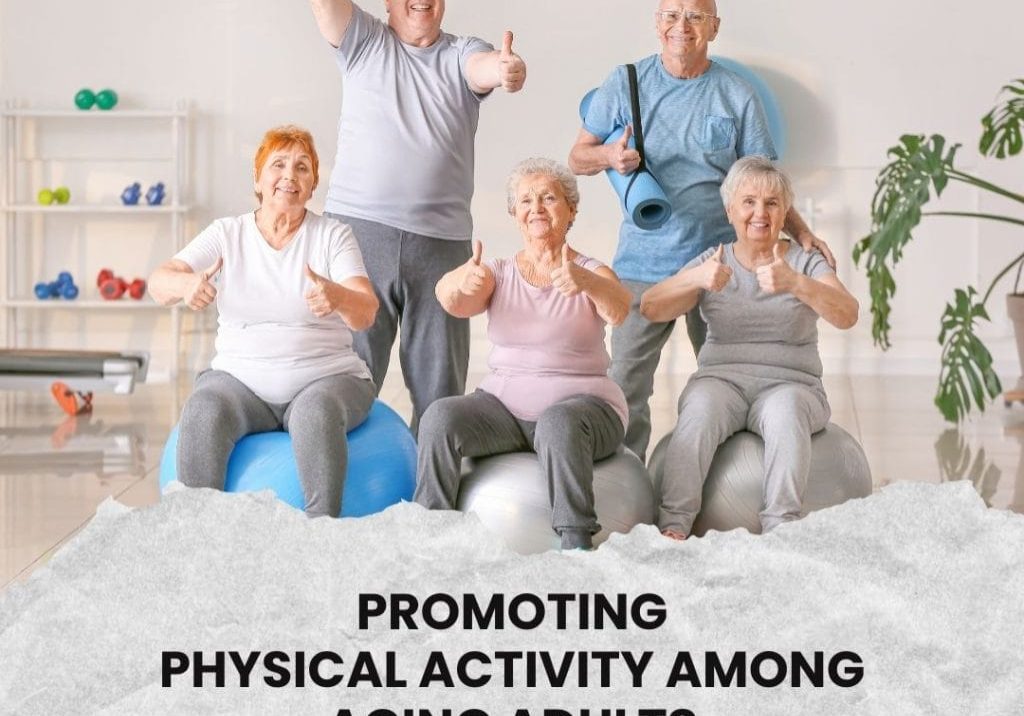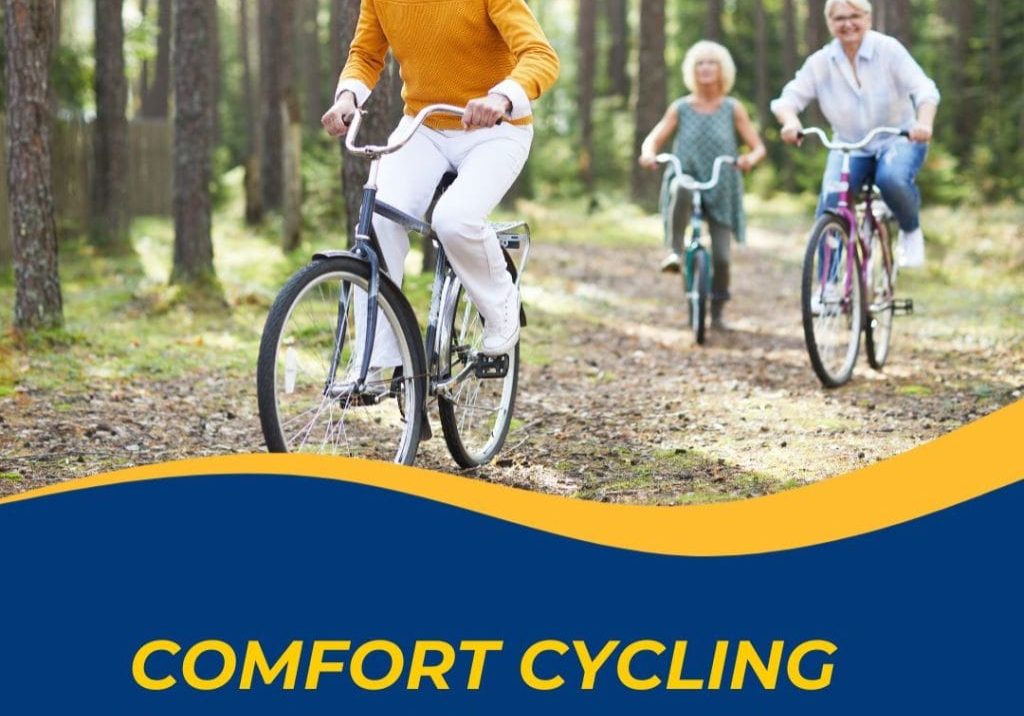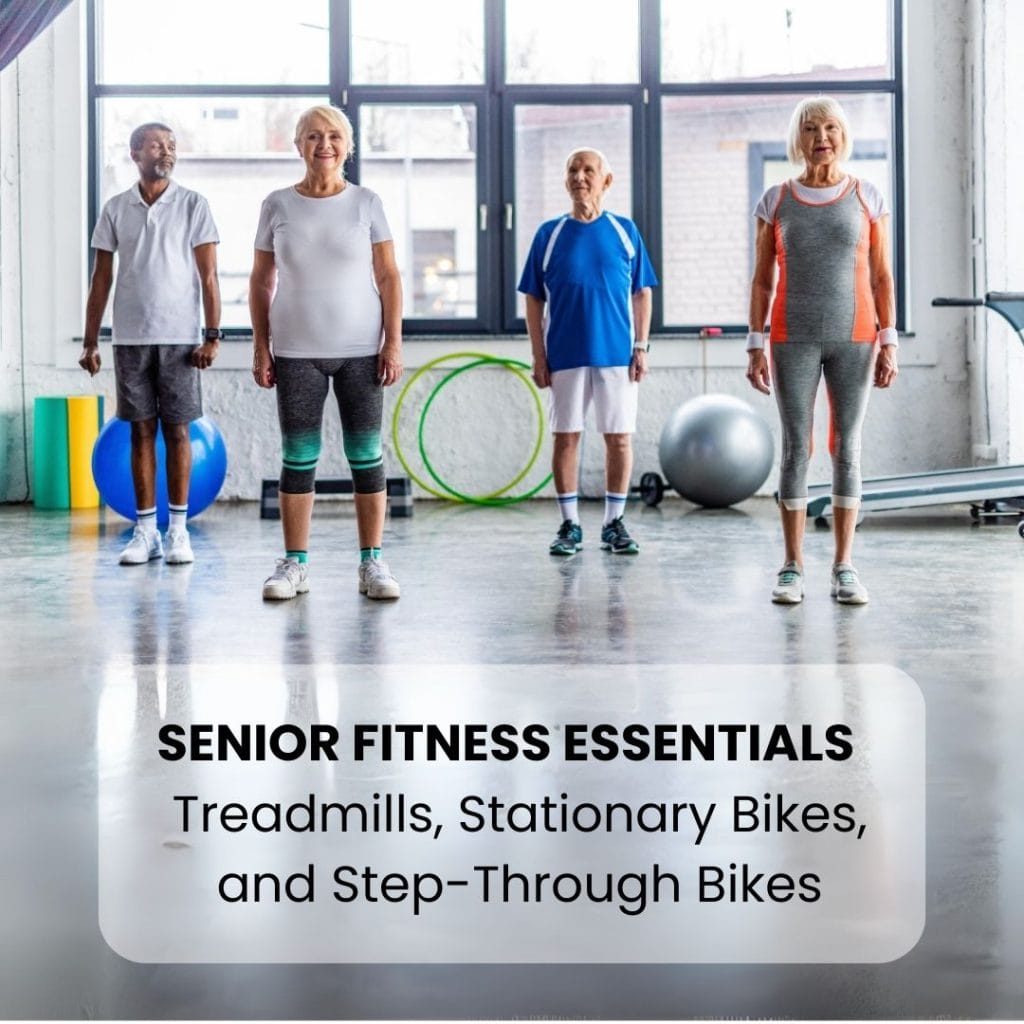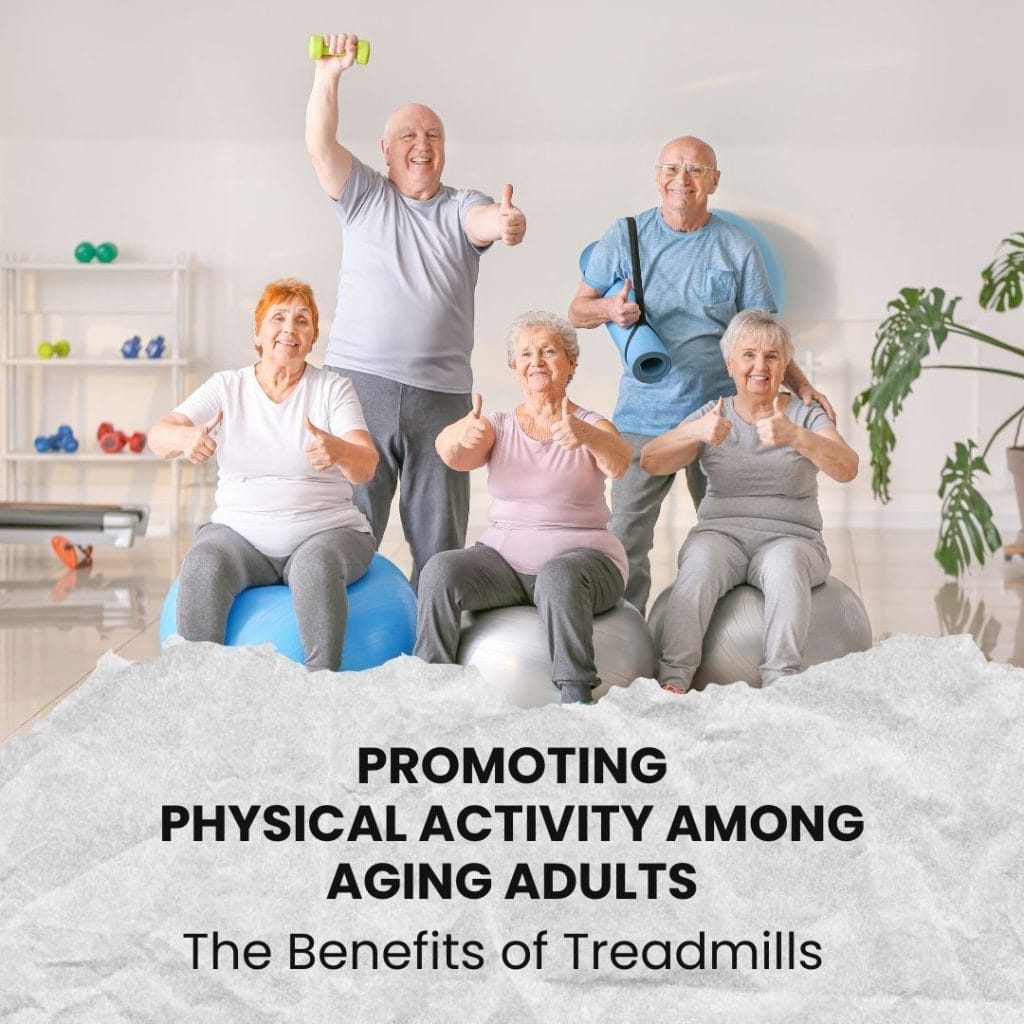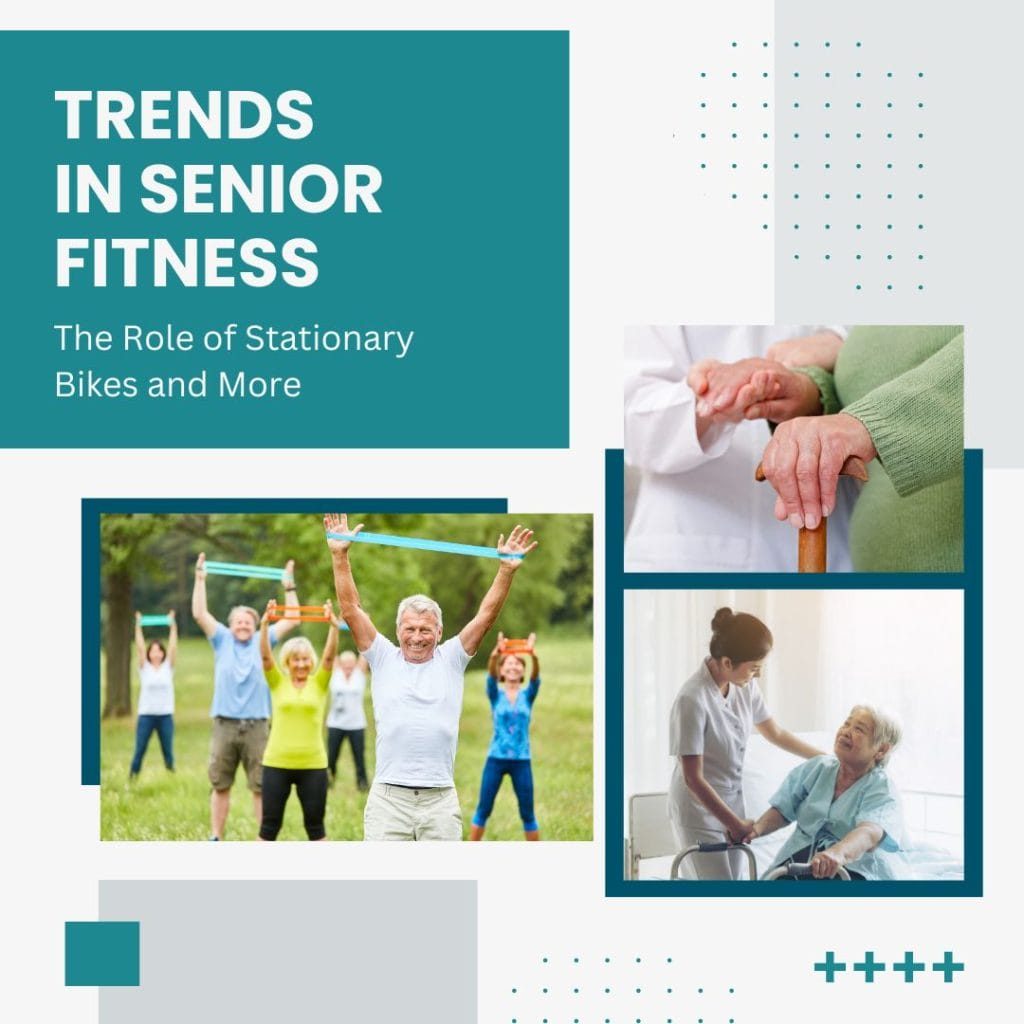No matter your age or physical condition, it’s never too late to start exercising and get fit. These easy tips will help you get started safely and make it fun.
What are the benefits of exercise for older adults?
As we age, there are various factors that contribute to a decrease in physical activity and a more sedentary lifestyle. These reasons may include health issues, concerns about weight or pain, or even the belief that exercise is not suitable for you. However, as you get older, maintaining an active lifestyle becomes increasingly crucial for your overall well-being.
A recent study conducted in Sweden revealed that engaging in physical activity is the primary factor in promoting longevity, even if you start exercising later in life. Adopting an active lifestyle not only adds years to your life but also enhances the quality of those years.
Incorporating movement into your routine can help increase your energy levels, preserve your independence, safeguard your heart health, and manage symptoms of illness or discomfort, as well as control your weight. Regular exercise also has positive effects on your mental well-being, mood, and memory. It is never too late to discover simple and enjoyable ways to become more active, improve your mindset, and reap the numerous physical and mental health benefits that exercise offers.
Physical health benefits of exercise for seniors
Exercise can offer several benefits for older adults:
- Maintaining or shedding weight becomes more challenging as your metabolism naturally slows down with age. Regular exercise can boost your metabolism and promote muscle mass, aiding in calorie burning.
- Regular exercise has been associated with improved immune and digestive functioning, better blood pressure and bone density, and a reduced risk of chronic diseases such as Alzheimer’s, diabetes, obesity, heart disease, osteoporosis, and certain cancers.
- Exercise can enhance mobility, flexibility, and balance by improving strength, flexibility, and posture. This, in turn, can reduce the risk of falls and help manage chronic conditions like arthritis.
Mental health benefits
Exercise can also offer the following benefits:
- Enhance sleep quality: Quality sleep is crucial for overall health as you age. Regular physical activity can help you fall asleep faster, achieve deeper sleep, and wake up feeling more energized and refreshed.
- Elevate mood and boost self-confidence: Exercise acts as a significant stress reliever, and the endorphins it produces can help alleviate feelings of sadness, depression, and anxiety. Being active and feeling strong can also enhance self-confidence.
- Improve brain function: While activities like Sudoku or crossword puzzles keep the brain active, exercise has unparalleled positive effects on brain health. It can enhance various brain functions, including multitasking, creativity, and memory. Engaging in physical activity may even slow the progression of brain disorders like Alzheimer’s disease.
Overcoming barriers to physical activity as you age:
Starting or maintaining an exercise routine can be challenging at any age, and it becomes more demanding as you get older. Health problems, aches and pains, concerns about injuries or falls, lack of exercise experience, or the belief that exercise is dull may discourage you. Despite these obstacles, becoming more active can invigorate your mood, reduce stress, help manage illness symptoms and pain, and improve overall well-being. The benefits of exercise don’t necessarily require strenuous workouts or gym visits; incorporating more movement and activity into your daily life, even in small ways, can yield positive outcomes. Regardless of your age or physical condition, it’s never too late to start moving your body, enhance your health and mindset, and improve the aging process.
Six myths about activity and aging
Myth 1: “There’s no point in exercising. I’ll age regardless.”
Fact: Engaging in regular physical activity can help you maintain a youthful appearance, feel younger, and enjoy independence for a longer time. It also reduces the risk of various conditions, including Alzheimer’s, dementia, heart disease, diabetes, certain cancers, high blood pressure, and obesity. Furthermore, the mood-enhancing benefits of exercise remain significant throughout life, even at the age of 70 or 80, just as they were at 20 or 30.
Myth 2: “Exercise increases the risk of falling.”
Fact: Regular exercise strengthens the body and improves balance, reducing the risk of falls and preventing the loss of bone mass.
Myth 3: “It’s frustrating; I can never be as athletic as I used to be.”
Fact: As you age, changes in hormones, metabolism, bone density, and muscle mass naturally lead to a decline in strength and performance levels. However, this doesn’t mean you can’t derive a sense of achievement from physical activity or improve your health. Setting realistic lifestyle goals appropriate for your age is key. It’s important to remember that a sedentary lifestyle has a greater impact on athletic ability than biological aging.
Myth 4: “I’m too old to start exercising.”
Fact: It’s never too late to start moving and improve your health! In fact, adults who become active later in life often experience greater physical and mental improvements compared to their younger counterparts. If you’ve never exercised before or it’s been a while, you won’t have the same sports injuries as many regular exercisers do later in life. In other words, you can quickly start reaping the benefits. Begin with gentle activities and gradually increase your intensity.
Myth 5: “I can’t exercise because of my disability.”
Fact: If you are chair-bound, you may face unique challenges. However, there are still exercises you can do to increase your range of motion, improve muscle tone and flexibility, and promote cardiovascular health, such as lifting light weights, stretching, and engaging in chair aerobics, chair yoga, and chair tai chi. Many swimming pools offer wheelchair access, and there are adaptive exercise programs available for wheelchair sports like basketball.
Myth 6: “I’m too weak or have too many aches and pains.”
Fact: Engaging in physical activity can help you manage pain, improve your strength, and boost your self-confidence. Many older individuals find that regular exercise not only helps prevent the decline in strength and vitality that comes with age but also improves it. The key is to start slowly and gently.
What if you hate to exercise?
- Exercise doesn’t have to be dreadful; find activities you enjoy.
- Lift weights while listening to music or an audiobook.
- Walk laps at the mall while window shopping.
- Play tennis to get competitive.
- Take nature hikes and capture photographs.
- Socialize at yoga classes or fitness centers.
- Watch a favorite movie or TV show while on the treadmill.
- Chat with a friend while walking, stretching, or strength training.
- Walk the golf course instead of using a cart.
- Walk or play fetch with a dog, or volunteer at a pet shelter.
- Relieve stress by going for a run, walk, or cycle.
- Find an exercise buddy to try new activities and spend time with a good friend.
Building a balanced exercise plan
Maintaining an active lifestyle doesn’t require a scientific approach. Simply keep in mind that incorporating various forms of physical activity not only keeps your workouts engaging but also enhances your overall well-being. The crucial aspect is to discover activities that you find enjoyable, which align with the four pillars of fitness. These include:
1: Balance
What it is: Balance exercises help maintain standing and stability, whether you’re stationary or moving around. Try yoga, tai chi, and posture exercises to gain confidence with balance.
Why it’s good for you: It improves your balance, posture, and the quality of your walking. It also reduces your risk of falling or fear of falls.
2: Cardio
What it is: Cardiovascular exercise uses large muscle groups in rhythmic motions over a period of time. It gets your heart pumping and may even leave you feeling a little short of breath. Cardio workouts include walking, stair climbing, swimming, hiking, cycling, rowing, tennis, and dancing.
Why it’s good for you: Cardio exercise helps lessen fatigue and shortness of breath. It also promotes independence by improving endurance for daily activities such as walking, house cleaning, and errands.
3: Strength and power training
What it is: Strength training builds up muscle with repetitive motion using weight or external resistance from machines, free weights, elastic bands, or your own body weight. Power training is often strength training done at a faster speed to increase power and reaction times.
Why it’s good for you: Strength training helps prevent loss of bone mass, builds muscle, and improves balance—important for staying active and avoiding falls. Power training can improve your speed while crossing the street, for example, or prevent falls by enabling you to react quickly if you start to trip or lose balance. Building strength and power will help you stay independent and make day-to-day activities such as opening a jar, getting in and out of a car, and lifting objects easier.
4: Flexibility
What it is: Flexibility workouts challenge the ability of your body’s joints to move freely through a full range of motion. This can be done through stationary stretches or stretches that involve movement to keep your muscles and joints supple and less prone to injury. Yoga is an excellent means of improving flexibility.
Why it’s good for you: Flexibility helps your body stay limber and increases your range of movement for ordinary physical activities, such as looking behind while driving, tying your shoes, shampooing your hair, or playing with your grandchildren.
Activities beneficial to older adults
Walking. Walking is a perfect way to start exercising. It requires no special equipment, aside from a pair of comfortable walking shoes, and can be done almost anywhere.
Senior sports or fitness classes. Exercising with others can help keep you motivated while also providing a source of fun, stress relief, and a place to meet friends.
Water aerobics and water sports. Working out in water reduces stress and strain on the body’s joints.
Yoga. Yoga combines a series of poses with breathing. Moving through the poses helps improve strength, flexibility and balance, and can be adapted to any level.
Tai chi and qi gong. These martial arts-inspired systems of movement can increase balance and strength. Classes for seniors are often available at local YMCA or community centers.
Getting started safely
Getting active is one of the healthiest decisions you can make as you age, but it’s important to do it safely.
Get medical clearance from your doctor before starting an exercise program, especially if you have a preexisting condition. Ask if there are any activities you should avoid.
Consider health concerns. Keep in mind how your ongoing health problems affect your workouts. For example, diabetics may need to adjust the timing of medication and meal plans when setting an exercise schedule.
Listen to your body. Exercise should never hurt or make you feel lousy. Stop exercising immediately and call your doctor if you feel dizzy or short of breath, develop chest pain or pressure, break out in a cold sweat, or experience pain. And put your routine on hold if a joint is red, swollen, or tender to the touch—the best way to cope with injuries is to avoid them in the first place. If you regularly experience pain or discomfort after exercising, try exercising for less time but more frequently throughout the day.
Start slow and build up steadily. If you haven’t been active in a while, build up your exercise program little by little. Try spacing workouts in ten-minute increments twice a day. Or try just one class each week.
If you’re concerned about falling, start with easy chair exercises, riding a recumbent exercise bike, or water-based activities like swimming or pool aerobics to increase your fitness and confidence. You may also want to consider wearing a medical alert device for peace of mind.
Prevent injury and discomfort by warming up, cooling down, and keeping water handy.
Make a commitment to follow an exercise schedule consistently for a minimum of three to four weeks. This will help turn it into a habit and make it easier to stick with. Finding enjoyable activities can greatly facilitate this process.
Explore the practice of mindfulness during exercise. Instead of zoning out, try to focus on the sensations of your body as you move – the rhythm of your breathing, the impact of your feet on the ground, and the flexing of your muscles. Practicing mindfulness can enhance your physical condition, alleviate stress and anxiety, and reduce the risk of accidents or injuries.
If you have an injury, disability, weight problem, or diabetes…
While exercising with mobility issues may present challenges, you can overcome physical limitations and discover enjoyable ways to stay active and improve your overall health and well-being by adopting a creative approach.
Support your activity levels with a proper diet. Both diet and exercise have a significant impact on your energy, mood, and fitness. Many older adults don’t consume enough high-quality protein, even though evidence suggests they need more than younger individuals to maintain energy levels, lean muscle mass, and promote recovery. For older adults without kidney disease or diabetes, a target of approximately 0.5 grams of protein per pound of body weight is recommended.
Diversify your sources of protein by including fish, poultry, beans, and eggs rather than relying solely on red meat. Reduce the consumption of processed carbohydrates like pastries, cakes, pizza, cookies, and chips, and replace them with high-quality protein. Opt for snacks like nuts and seeds instead of chips, substitute a baked dessert with Greek yogurt, and trade in slices of pizza for a grilled chicken breast and a side of beans.
Tips for staying motivated:
- It’s common to feel discouraged when illness, injury, or changes in the weather disrupt your routine and seem to set you back. However, there are ways to stay motivated when faced with life’s challenges.
- Focus on short-term goals, such as improving mood, energy levels, and reducing stress, rather than long-term goals like weight loss, which may take longer to achieve.
- Reward yourself when you successfully complete a workout, reach a new fitness goal, or simply show up on a day when you were tempted to skip your activity plans. Choose something you look forward to but only allow yourself to have it after exercising, like taking a hot bath or enjoying your favorite cup of coffee.
- Keep a log of your activities or use an app to track your progress. This not only holds you accountable but also serves as a helpful reminder of your achievements.
- Find support by working out with a friend or family member. Encouraging and motivating each other can make the journey more enjoyable and successful.
- How to stay fit when your routine changes
- You’re on vacation
- Many hotels now have fitness centers. Bring along your exercise clothing or equipment (resistance band, bathing suit, or walking shoes).
- Get out and see the sights on foot rather than just by tour bus.
- Caring for an ill spouse is taking up too much of your time
- Work out to an exercise video when your spouse is napping.
- Ask a family member or friend to come over so you can go for a walk.
- Your usual exercise buddy moves away
- Ask another friend to go with you on your daily walk.
- Reach out to other older adults in your area—many are in the same boat, so be the one to break the ice.
- Join an exercise class at your local community center or senior center. This is a great way to meet other active people.
- You move to a new community
- Check out the fitness centers, parks, community websites, and recreation associations in your new neighborhood.
- Look for activities that match your interests and abilities.
- Illness keeps you out of action for a few weeks
- Wait until you feel better and then start your activity again.
- Gradually build back up to your previous level of activity.
- You’re recovering from injury or surgery
- Talk with your doctor about specific exercises and activities you can do safely.
- Start slowly and gradually build up your activity level as you become stronger.
Conclusion
In conclusion, exercise is important for people of all ages, but it becomes increasingly critical as we get older. Regular physical activity can improve our physical and mental health, reduce the risk of chronic diseases and falls, and help us maintain independence as we age. By starting slow, preventing injuries, staying motivated, and being creative with our approach to exercise, we can overcome any barriers and continue to lead an active and fulfilling lifestyle. Remember, it’s never too late to start exercising and reap its many benefits. So why not begin today? Your future self will thank you for it.


